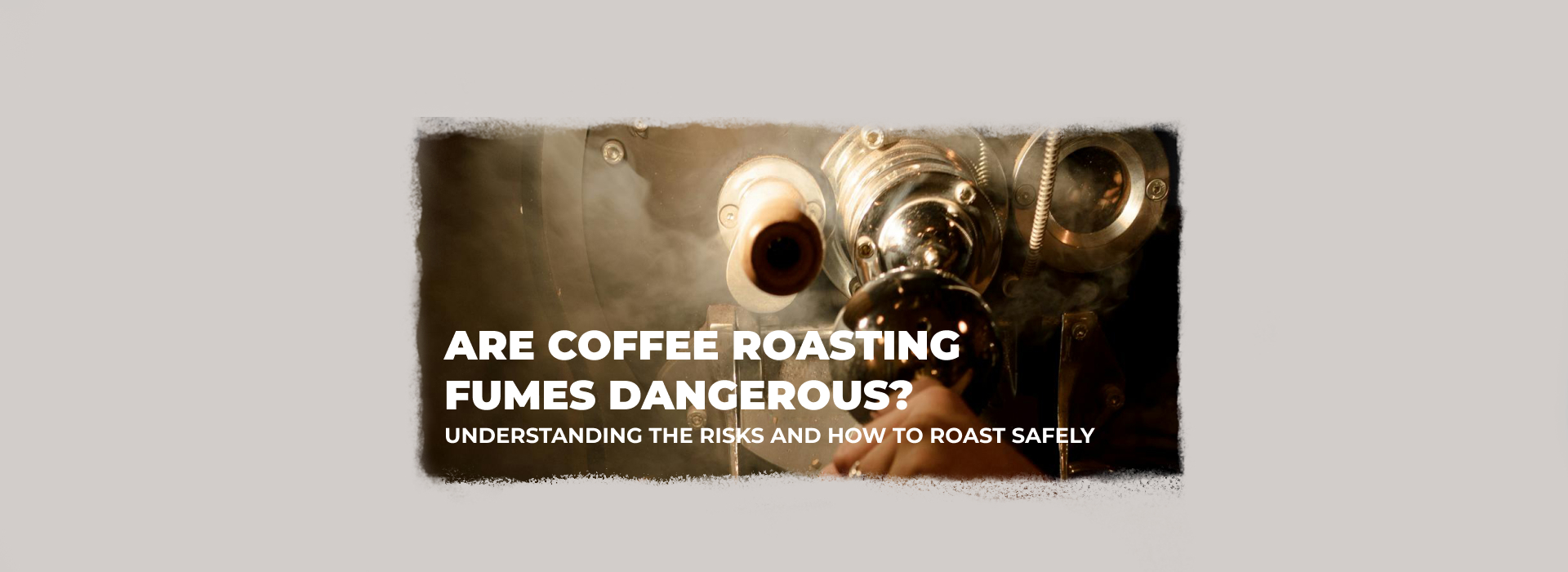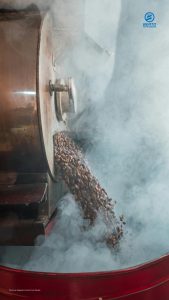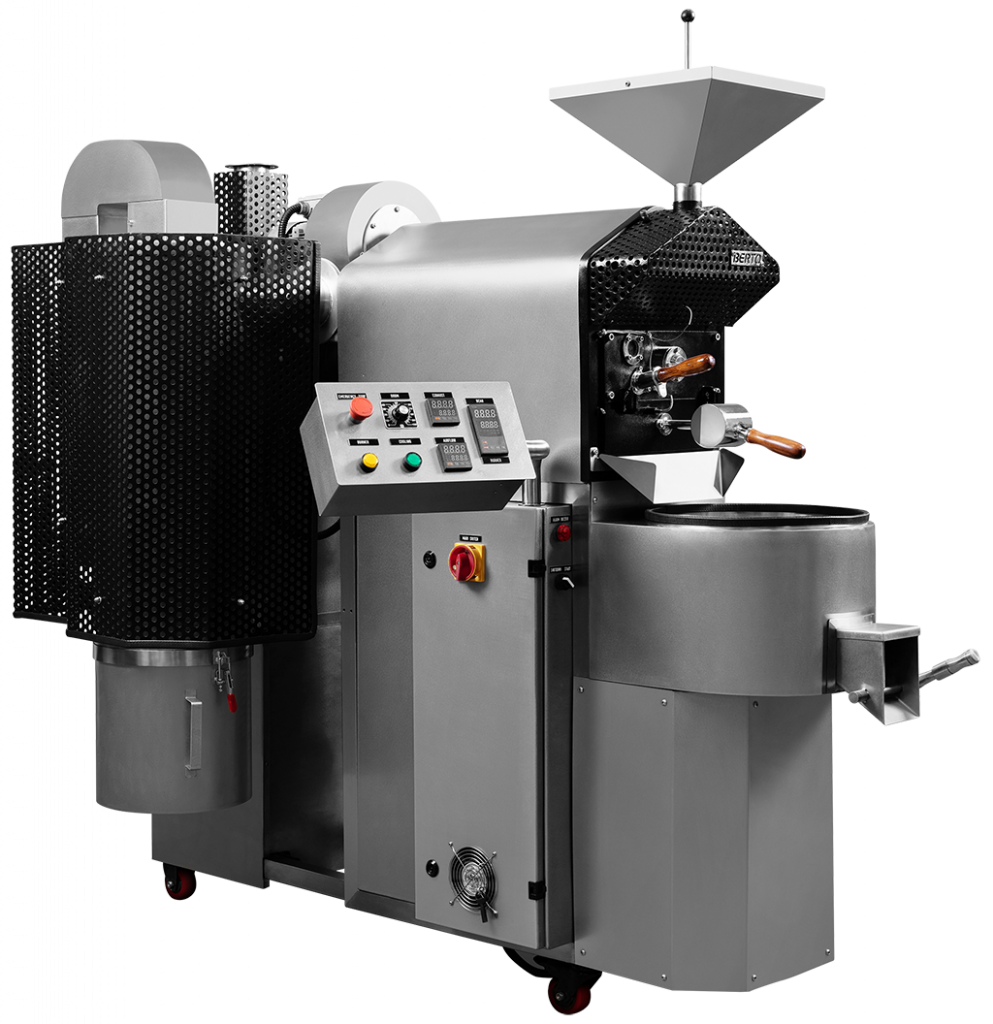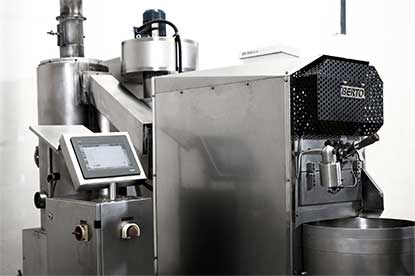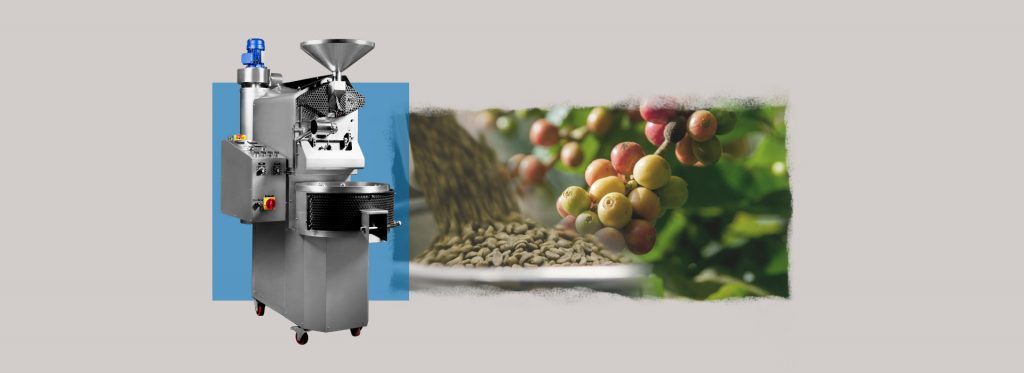Are Coffee Roasting Fumes Dangerous? Understanding the Risks and How to Roast Safely
Roasting coffee is a remarkable craft—a green, grassy bean transforms into a rich, aromatic treasure that fills the air with irresistible scents. Yet along with those wonderful aromas come coffee roasting fumes, a mix of compounds released as the beans heat and crack. Many people overlook this part of roasting, but when it comes to emissions and chemical compounds, given that they end up in the air we work and breathe in, it’s worth asking: Are coffee roasting fumes dangerous?
In this post, we’ll look at what’s floating around your roastery, whether it poses any risks, and how modern roasting technology like Berto’s smokeless hot-air systems helps you roast cleanly and safely. Let’s dive in!
What Are Coffee Roasting Fumes Made Of?
The sweet, toasty smell of roasting coffee is one of the joys of the craft. But behind that inviting aroma lies a complex mix of compounds released as green coffee beans undergo high heat and chemical changes.
Volatile Organic Compounds (VOCs) like diacetyl and 2,3-pentanedione are among the most common emissions. These are organic chemicals that vaporize during roasting and contribute to coffee’s unique aroma and flavor.
Carbon monoxide (CO) is another byproduct created during the combustion processes inside the roaster.
Then there are particulates and smoke—tiny particles released as beans caramelize and crack, especially during the first and second crack phases when the beans expand and shed chaff.
While these compounds help create the flavors and aromas coffee lovers crave, they’re also important to understand because some can affect health if exposure isn’t properly managed. We’ll look at those risks in the next section.
Are Coffee Roasting Fumes Dangerous?
Yes, coffee roasting fumes can be dangerous, especially in enclosed or poorly ventilated spaces. The compounds released during roasting have the potential to affect health both in the short term and over the long run.
Short-term exposure to these fumes can cause discomfort like irritated eyes, scratchy throats, or headaches. If you’ve ever felt your eyes sting a bit after a long roasting session, you’ve already experienced some of these immediate effects.
The bigger concern is long-term exposure. Certain compounds in coffee roasting fumes, like diacetyl and 2,3-pentanedione, have been linked to serious respiratory issues when inhaled over time. One condition that’s gained attention in industries working with heated food products is bronchiolitis obliterans, sometimes called “popcorn lung.” It’s a rare but serious lung disease that can cause coughing, shortness of breath, and permanent damage. Studies have found elevated levels of these compounds in coffee roasting facilities, which puts workers at potential risk if proper safety measures aren’t in place.
Small-batch and café roasters often face higher risks because they’re working in tighter spaces without large-scale industrial ventilation. It’s easy to underestimate the buildup of fumes when roasting just a few kilos at a time, but even smaller operations need to pay close attention to air quality.
Knowing the risks doesn’t mean you have to stop roasting—it simply means taking steps to protect yourself and your team. Roasting great coffee should be both an art and a safe, sustainable craft.
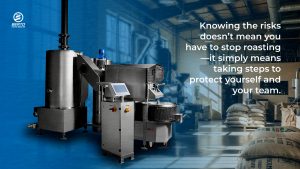
How to Stay Safe When Roasting Coffee
Learning that coffee roasting fumes can be harmful might feel a bit daunting, but the good news is there’s a lot you can do to keep your roasting environment safe. Protecting your health and your team’s well-being doesn’t have to be complicated. With the right equipment and smart habits, safe roasting is entirely within reach.
1. Ventilation is your first line of defense
Good airflow helps remove fumes and keeps fresh air circulating in your workspace. Roasters should install exhaust systems and ducting that vent fumes outside, rather than letting them build up indoors. Even small spaces benefit enormously from a well-designed ventilation setup.
2. Emission control equipment can make a big difference
Tools like afterburners, catalytic oxidizers, or specialized filtration systems help reduce harmful emissions by burning off or trapping pollutants before they leave the roaster. Investing in these technologies may seem like a big step, but they pay off in cleaner air and safer working conditions.
3. Batch management also matters
Roasting smaller batches means fewer fumes are released in each session, which helps keep overall air quality in check. This approach can be especially helpful for café roasters or small-batch operations working in limited space.
4. Air quality monitoring is another smart move
Installing indoor air sensors that track levels of carbon monoxide, VOCs, or particulates can alert you if anything spikes beyond safe limits. These tools take the guesswork out of knowing whether your ventilation and safety measures are working.
5. Finally, staff training is crucial
Make sure everyone on your team understands the risks associated with roasting fumes and knows how to operate equipment safely. Simple steps like keeping doors open, checking sensors, or wearing protective gear can go a long way toward maintaining a healthy workspace.
Staying proactive about safety helps ensure that roasting coffee remains a craft you can enjoy for years to come, without compromising health or the quality of your coffee.
Why a Smokeless System Matters
Good practices like ventilation and managing roast sizes play a big role in keeping roasting spaces safer and improving air quality. However, even with these measures, some smoke, fumes, and fine particles can still linger in the air, especially in smaller or enclosed environments. A smokeless system adds another layer of protection by burning off or capturing many of these pollutants right at the source. While no system can eliminate emissions, smokeless technology dramatically reduces smoke and harmful compounds, making it far safer and more practical to roast indoors without complex exhaust setups or regulatory worries.
At Berto, we’ve designed our roasters with this in mind. The Berto Essential Air is the world’s smallest commercial smokeless hot air coffee roaster, perfect for cafés and micro roasteries that want professional results in tight spaces. Its compact 3 kg capacity fits seamlessly into smaller operations, while the smokeless system helps reduce indoor pollution and delivers a cleaner, more consistent cup. Simple, intuitive controls make it easy for any roaster to use.
For larger production needs, our Berto Type R Roasters feature a fully smokeless, low-emission system. Exhaust air from the drum is sent through a high-performance cyclone and then into a furnace, helping reduce emissions and keep roasting operations cleaner. These roasters use 100% hot-air heat transfer for even roasting and consistent results, with touch-screen controls and capacities ranging from 8 kg to 60 kg to support growing businesses.
Let’s make sure your roastery is a safe and healthy space to craft exceptional coffee. Start with Berto’s smokeless hot-air roasters. Contact us today!

